Overall History
About
History of the Four Cylinder Club of America
It was a revolution. Americans had never before seen so many foreign makes of cars in their country. It was post-World War II and American soldiers stationed abroad, primarily in England, fell in love with the cars commonly in use there. In contrast to the typical heavy, chrome laden, six or eight cylinder American cars, these foreign cars were mostly four cylinder vehicles, light, nimble, and fun to drive. Many troops brought examples of these cars back with them upon their return home. And the love affair with these unique vehicles grew exponentially.
Prior to World War II, most of the foreign cars that made their way to our shores were luxury models such as Rolls Royce and Bentley. Yes, a few hardy entrepreneurs ventured to sell more modest foreign cars in the United States, but they were by far the exception. Among them was Light Car Motors in Los Angeles, where Austin and Fiat sedans were sold in the 1930s and early 1940s. But, lacking a network of parts and service depots, these cars did not sell well and made barely a dent in the American market.
With our soldiers leading the way, and fueled by a need to rebuild post World War II ravaged economies abroad, foreign cars were actively exported to numerous countries. One of the new markets to receive these cars was the United States of America. Austin, MG, Hillman, Singer, Fiat, Simca, Porsche, Volkswagen, Jaguar, English Ford, and others established networks of dealerships, supported by parts and service facilities to assure buyers that the cars they bought could be repaired and maintained.
These distinctive cars attracted an equally distinctive type of individual. The people drawn to the new breed of foreign car, tended to be nonconformists, adventurers, experimenters. And, with their enthusiasm, came a need to share their passions with other with a similar bent. Looking abroad for inspiration, they organized competitive events, such as road races, rallies, autocrosses, time trials, and gymkhanas. And to provide a foundation for social interaction and event organization hundreds of clubs and organizations were quickly formed. Among the many organizations created at this time was the Four Cylinder Club of America.
Gallery – Early Club Images
Founded by British immigrant, John Foster in Glendale, California, the FCCA quickly grew into the largest non-racing sports car club in the Unites States. Some sources place the founding of the club in 1949, while others indicate it began in 1950. Regardless, it is clear the club was incorporated as a State of California nonprofit organization on July 19, 1951. Initially, the club consisted of a single entity, anchored in Glendale. But attendance at club meetings and events grew so quickly that a single club was not big enough to accommodate the throngs of enthusiasts. So, the Club decided to form chapters. Each chapter agreed to abide by the FCCA’s bylaws and to the directives issued from the National Headquarters. At one point, there were chapters in ten states spanning the distance from the west to the east coast! And, with the chapters spread over such a huge geographic area, it became necessary to divide the country up into divisions, with chapters attached to these divisions and the divisions attached to FCCA National.
In 1959, founding president, John Foster, passed the gavel to Charles Lucas, the first top leadership change in the Club’s history. The subsequent years saw a number of club presidents, with club growth peaking in the 1960s. Moving through the sixties and into the seventies and eighties, the size of the FCCA declined. During this time, the primary advantage of association with the FCCA was its liability insurance plan, which allowed clubs to receive coverage for activities, including non-wheel-to-wheel competitive events, for a very reasonable fee. In 1985, the FCCA’s insurance carrier withdrew its coverage and no other insurance provider would cover chapters outside of California. While this might have appeared to have been a devastating blow to the Club, by this time the only chapters outside of California were those in Arizona and New Mexico.
Through the 1980s and into the 1990s chapters continued to fall away. Some believe the 1970s and 1980s oil embargoes hurt attendance at the FCCA’s most popular events, rallies. In 1996, FCCA leaders decided to cease being an active club. But, that was not the end of the FCCA. Randy York, a member of one of FCCA’s last chapters, the United Five-Ten Owners Club, kept the corporate entity of the FCCA alive and today it is the vehicle through which a Datsun 510 enthusiasts club publishes its <em>Dime Quarterly</em> magazine. In addition, a core of Glendale Chapter “old timers” holds periodic reunions.
So, on paper and in spirit, the FCCA soldiers on. This web site is intended to add another dimension to the life of the legendary Four Cylinder Club of America. Of course, the above history only skims the surface of the rich and multifaceted story of the FCCA. To learn more, stay tuned to this web site. Here, we will make available stories, photos, newsletters, brochures, event programs, snippets and other fun stuff delving into the many events, personalities, developments, and projects of the FCCA’s approximately 47-year history as an active club. So, bookmark this site, join our forum, participate, and help us document the history of one of the most significant sports car clubs in the history of the United States.

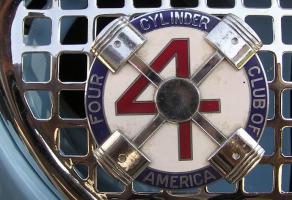
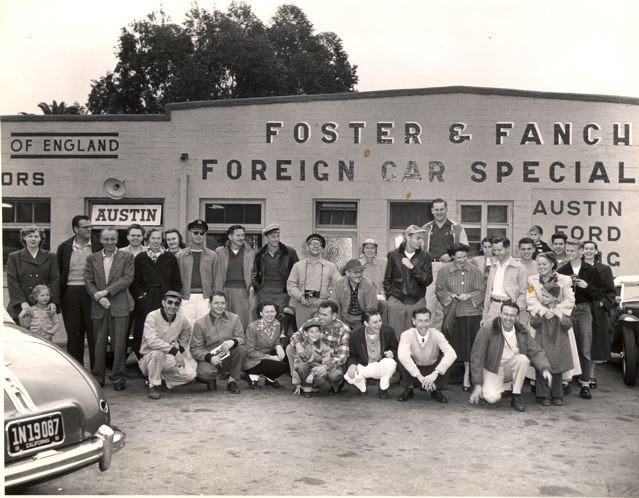


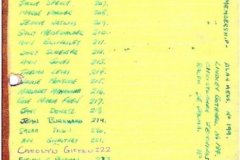
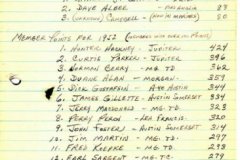
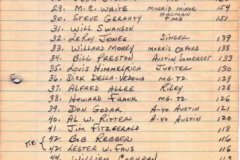
I’m curious if you can help me to identify what looks like a medalion of some kind which looks to be associated with your organization. It has 4 points and the inscription says “IX Desperation 500” “April 1968” “FCCA High Sierra Chapter”.
Thanks
Hi Terry
The High Sierra Chapter was a Four Cylinder Club of America affiliated club. The Desperation 500 was a multi-event rally the club promoted. I have talked to a couple of folks who ran this event and it sounds like it was a pretty wild affair. Here is a link to some photos of the event:
http://www.fourcylinderclubhistory.com/?page_id=369
I would be most interested in a photo of the medallion you have, as I would like to add it to the archive and the FCCA history web site. Can you send me a high-resolution photo of the medallion? At this point I have no regalia from the High Sierra Chapter.
Bill wilkman
FCCA History Webmaster
My MGTC has a dash plaque which reads Winner 1951 Gymkhana S.C.C.A. Any connection?
Hi John.
The SCCA and the FCCA operated as separate organizations. The SCCA (Sports Car Club of America) was (and still is) primarily a racing club, but it also has a history of involvement in rallies, time trials, hill climbs, auto crosses, and gymkhanas. The FCCA dabbled in racing, but early-on branded itself as a “non-racing” club. By “non-racing” it meant the club did not promote wheel-to-wheel competition. The club did promote high-speed events for solo vehicles, like auto crosses, time trials, hill climbs, and gymkhanas. FCCA members also supported racing activities, serving as flaggers and in other volunteer capacities. Individual members also raced their cars, but most did so under the auspices of the SCCA or California Sports Car Club, which used to be separate entities. Click here for a story about one FCCA member who, on a whim, raced his Austin A40 Devon at the first Pebble Beach Road Race. One early activity of the FCCA involved the construction of a race car using the chassis from a wrecked Austin A40 Devon. The race car was completed and entered in some races, but I find no evidence that it actually raced. Click here for more information on the race car. It appears to have ended up in a junk yard sometime in the mid-1950s. Overall, though, the FCCA concentrated its efforts on rallies, economy runs, and social events.
Bill Wilkman
FCCA History Webmaster
I am gathering material now from some of our old records about High Sierra Club. That is me giving out one of the trophies at Desperation 500. You have it listed in the Tehachapi area which is wrong we were in Inyokern and Ridgecrest. I will follow up with more information later. Thanks for the great start you guys have gotten of too. Walt
Hi Walt. Great to hear from you. I am in touch with Mike Thompson, son of Chuck Thompson. He sent me some plaques from the 1963, 1965, and 1968 Desperation 500 events. I’ll forward the emails in which I sent images of the items Mike provided to the FCCA email list. I will also add you to that list.
Bill Wilkman
I was a FCCA member Phoenix Chapter in the 1960’s. I had a 1959 Triumph TR-3, I have many ffond memories of good times with great people.
Jim Leech
Good to hear from you, Jim. Phoenix was a very active chapter back in the day. I have a few dash plaques, patches, and newsletters from that chapter in the FCCA archives. If you come across anything of that sort you’d like to donate, please let me know.
Bill Wilkman
FCCA Archivist
Hello. I own Walker Edmiston’s Miller Crosley race car which is starting to undergo restoration. Would you have any materials that would talk about this car in the archives? I would also like to know how he was involved in the club. Thank you
Best-
Mark Schoenlein
Perrysburg, Ohio
Hi Mark. Your race car restoration sounds very interesting. Unfortunately, I do not know of any further information on this car.
Bill Wilkman
FCCA Archivist
I forgot to mention that the car moved on to the Phoenix area around 1960 thru 1990 and I am having trouble finding any info from that region. I know that it was a successful racecar there in the early 1980’s. Mark S.
Mark, Phoenix was a very active chapter, but was not involved in racing, other than its hill climbs. I am not aware of any information on Walker’s race car in that context.
Bill Wilkman
FCCA Archivist
mark I think i know alittle about your car Rob Uhl 602 930 7957
Just cruising the web, wow reading this brings back memories. I belonged to the Santa Clara valley chapter Ca. 1965. Rallied in a MGTD,XK120 super sport Riley path finder corvette stingray droptop. Had loads of fun. Now drive. Cayenne-S those where fun times!!!!!
Thanks, Dennis for your post. In response to another of your posts, I supplied information from a file I have on the Santa Clara Chapter. If you have any photos of chapter events and/or your cars, I’d be interested in adding them to the archive. If you come across any, I’d be happy to receive jpg scans. You had quite an eclectic collection of cars!
Hi Club Members,
I was a member of the Santa Barbara Chapter from around 1955 to 1959 participating in every FCCA event I could as I was also a member of California Sports Car Club for my racing and a member of the Singer Owners Club for racing and other crazy high-speed events. I believe that it was in 1957 that Sam Hanks carried a 4 Cylinder Club decal on his Indy car for the Indianapolis 500. I continued to race for over 60 years finally crashing out in Turn 1 at Sonoma Raceway in 2017 in my Thunder Roadster. I have many (mounted) dash plaques from the FCCA back then and quite a few pictures stashed some place. Another Santa Barbara member who is still alive is Dick Brashear the Ferrari Racer whom I keep in touch with. I hope that I can figure out how to stay in touch with you. Ralph
Ralph, you can always communicate with me via email at wilkmanracing@aol.com. I’ll gladly add your FCCA materials to the archive whenever you’re ready to let go of them.
Bill Wilkman
FCCA Archivist